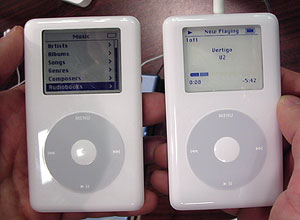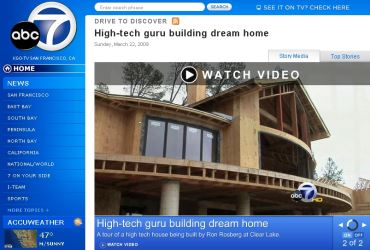 For years, we have been reading the promise of paper-white electronic
displays, a future of books and newspapers with ink-on-paper
readability delivered on super-thin LCD displays. For the tree-huggers
among us, the ultimate eBook technology may remain a distant promise,
but at least one company is making a practical step toward
commercializing white-background LCDs.
For years, we have been reading the promise of paper-white electronic
displays, a future of books and newspapers with ink-on-paper
readability delivered on super-thin LCD displays. For the tree-huggers
among us, the ultimate eBook technology may remain a distant promise,
but at least one company is making a practical step toward
commercializing white-background LCDs.
 Also,
once charged, the pixels remain black until actively bleached, which
means that these displays remain stable over a period of several hours
even when turned off. For displays that do not change frequently, this
suggests even-lower power consumption than has been previously
imagined. In the near future, we hope to see a lot of white LCD text
and numeric displays, most likely in white kitchen appliances,
thermostats, automotive display consoles, and the myriad of atomic
clocks produced by companies like Oregon Scientific, and hopefully the
folks at Apple will soon get excited about the new cosmetic
possibilities for their category-shattering iPod.
Also,
once charged, the pixels remain black until actively bleached, which
means that these displays remain stable over a period of several hours
even when turned off. For displays that do not change frequently, this
suggests even-lower power consumption than has been previously
imagined. In the near future, we hope to see a lot of white LCD text
and numeric displays, most likely in white kitchen appliances,
thermostats, automotive display consoles, and the myriad of atomic
clocks produced by companies like Oregon Scientific, and hopefully the
folks at Apple will soon get excited about the new cosmetic
possibilities for their category-shattering iPod.
What didn't we love about the NanoChromatic display? Although we were only looking at prototypes and reference designs, we noticed some speed problems in refreshing the display, and on the large displays, the middle of large black areas were not as dark as we had hoped. All previous attempts at white-background displays seem to be plagued by these same problems, and the folks at NTERA assured us that their technology is better at resolving this than any other solution, although apparently not perfect. Also missing was the hoped-for shades of gray. With such incredible contrast ratios, we thought that these displays might finally offer real shading, but I think we were hoping for too much.
For more information on this product visit www.ntera.com.

 Gadget Gurus technology reviews are heard and read by millions of people across the United States, including more than a dozen
Gadget Gurus technology reviews are heard and read by millions of people across the United States, including more than a dozen 